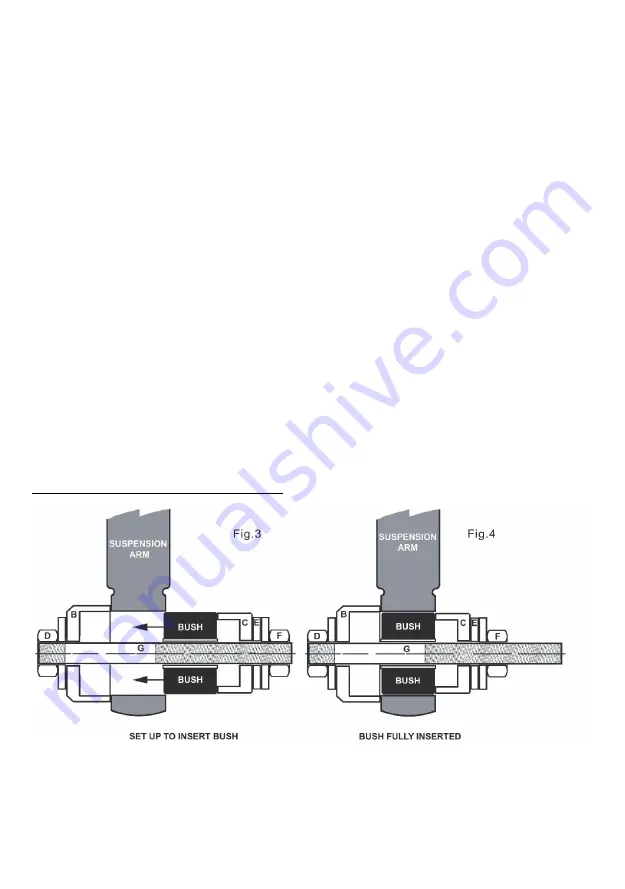
1. Screw the nut with washer attached (D) onto the short threaded portion of
threaded rod (G). Slide the pushing cup (C) onto the threaded rod in the
orientation shown above in fig.1.
2. Push the threaded rod through the centre of the bush to be removed until the
pushing cup bears against the bush.
3. Hold the assembly in place and slide the large static cup (A) onto the rod until
it bears against the surface of the suspension arm as shown above in fig.1.
4. Slide washer (E) onto the rod and retain the whole assembly by screwing the
nut with washer (F) onto the threaded rod.
5. Hold nut D with a spanner and then place a second spanner over the nut with
washer attached (F). This should preferably be a ratchet ring spanner for ease of
use and maximum accessability. As the nut is turned extraction will commence
as indicated in fig.2. Some considerable pressure may need to be applied to
initiate the first movement of the bush. As the bush leaves the suspension
arm ensure that the assembly is supported as it is likely to fall away from the
suspension arm once the bush becomes loose.
6. Disassemble the extractor and dispose of the old bush in compliance with
local authority waste disposal requirements.
INSERTING A BUSH. (Figs 3 & 4)
1. Screw the nut with washer attached (D) onto the short threaded portion of
threaded rod (G). Slide the small static cup (B) onto the threaded rod in the
orientation shown above in fig.3.
2. Hold the assembly against the suspension arm so that the static cup (B) is
aligned with the hole in the arm with the threaded rod sticking through to the






















